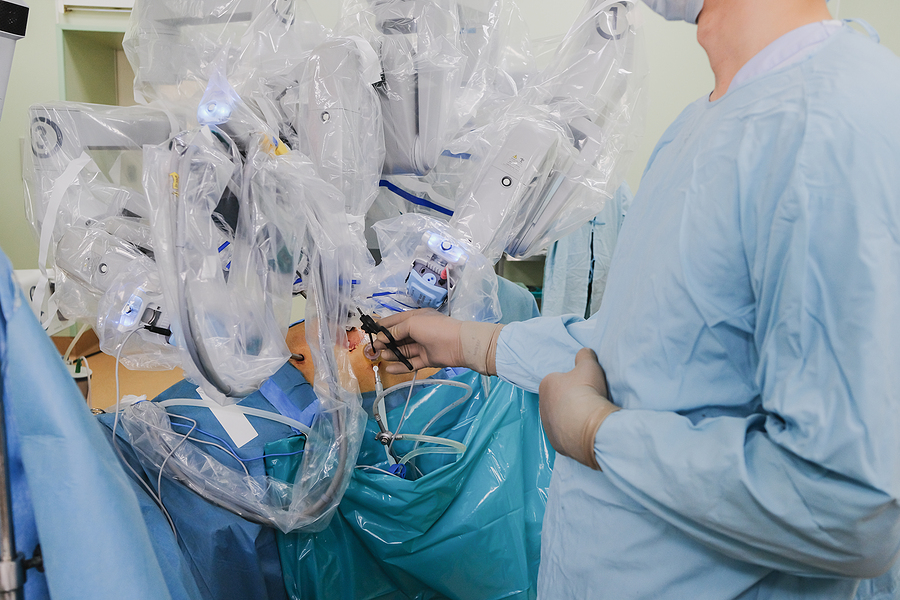Chronic back pain is a debilitating condition that affects millions of people worldwide, causing limitations in daily activities, missed workdays, and reduced productivity. Surgery is often the last resort for patients who have exhausted all other treatment options. However, traditional spinal surgery can be invasive, leading to prolonged recovery times, increased risks of complications, and decreased success rates. Fortunately, at The Institute for Comprehensive Spine Care, we specialize in robotic spinal surgery, an innovative and minimally invasive surgical technique that has numerous advantages for patients with chronic back pain.
What is Robotic Spinal Surgery?
Robotic spinal surgery is a minimally invasive procedure that uses advanced robotic technology to perform complex spinal surgeries. I control a robotic arm equipped with a high-definition camera and surgical tools via a computerized console. The robotic arm is inserted into your body through small incisions, allowing me to perform precise and accurate movements.
Benefits of Robotic Spinal Surgery for Chronic Back Pain
Minimally Invasive Procedure
Minimally invasive spine surgery is a technique that involves making small incisions instead of a large incision to access the affected area. Because robotic spinal surgery involves small incisions, it results fewer complications than traditional spinal surgery. The smaller incisions lead to a shorter hospital stay, a quicker recovery time, and less postoperative pain. In addition, the reduced risk of complications allows patients to resume their normal activities faster than with traditional surgery.
Minimally invasive spine surgery can be used to treat many conditions, including herniated discs, spinal stenosis, and degenerative disc disease.
Precision and Accuracy
Robotic spinal surgery offers a high degree of precision, enabling the surgeon to perform complex surgeries with greater ease. The robotic arm’s accurate movements increase the surgeon’s accuracy, leading to better outcomes for patients. The precision also allows for the preservation of healthy tissue and nerves, minimizing the risk of nerve damage, and reducing pain after the procedure.
Customized Surgery
Robotic spinal surgery allows surgeons to create a personalized surgical plan based on the patient’s unique anatomy. The advanced imaging technology used in the procedure generates detailed 3D images of the spine, allowing surgeons to plan and execute customized procedures tailored to the patient’s specific needs. This approach ensures better outcomes, faster recovery, and a reduced risk of complications.
Faster Recovery Time
Robotic spinal surgery allows patients to return to their daily activities faster than with traditional surgery. Quicker recovery time reduces the overall impact of the surgery on the patient’s life, allowing them to return to their normal activities with minimal disruption.
Minimal Scarring
Robotic spinal surgery results in minimal scarring compared to traditional spinal surgery due to the smaller incisions and the robotic arm’s precision. The smaller incisions also reduce the risk of infection and allow for a faster healing process.

Treatment for Complex Spinal Conditions
Robotic spinal surgery is effective in treating complex spinal conditions such as scoliosis, spinal tumors, and spinal cord injuries. The precision and accuracy of the robotic arm allow for easier access to hard-to-reach areas and more complex surgeries, resulting in better outcomes for patients. In particular, it is beneficial for patients with complex spinal conditions that require delicate and intricate surgical procedures. The high level of precision and accuracy offered by the robotic arm reduces the risk of complications and allows for better outcomes.
Reduced Pain Medication Usage
Robotic spinal surgery has been shown to reduce pain medication usage compared to traditional spinal surgery. Since the procedure is less invasive, patients require less pain medication during the recovery period. This reduces the risk of addiction and dependence on pain medication, which has become a significant public health concern in recent years.
Cost-Effective in the Long-Term
Although the initial cost of may be higher than traditional spinal surgery, the reduced hospital stay and shorter recovery time result in lower overall costs. Patients who undergo robotic spinal surgery also require fewer follow-up visits, resulting in further cost savings. Additionally, the faster recovery time enables patients to return to work faster, leading to increased productivity and a faster return on investment.
Considerations for Robotic Spinal Surgery
High-quality preoperative imaging is essential for planning the surgery, as it can accurately identify the precise location and nature of the spinal condition. Advanced imaging techniques such as CT scans and MRI can aid in the precise planning and execution of the procedure. After the surgery, postoperative care becomes critical to its success. Close monitoring and physical therapy will be required to help the patient regain mobility and strength. We will develop a plan for ongoing care and follow-up to ensure proper recovery after the procedure.

Robotic Spinal Surgery at The Institute for Comprehensive Spine Care
As a highly accredited medical professional with over 20 years of experience in treating spinal conditions, I am committed to educating my patients and providing personalized treatment plans that reduce pain, increase mobility, and improve their overall quality of life.
We strongly believe in the benefits of preventive care and minimally invasive surgeries, and we prioritize clear communication and personalized attention for each of our patients. Our goal is to work with our patients to develop a comprehensive treatment plan that addresses their specific needs and goals.
If you’re experiencing spinal issues that are causing a decrease in your quality of life, I encourage you to contact us to schedule a consultation today. My team and I are dedicated to providing expert care and support and have extensive experience with robotic spinal surgery. With our personalized approach to care and commitment to patient education, we believe that we can provide you with the best possible care for your spinal condition and help you live life to the fullest.

















